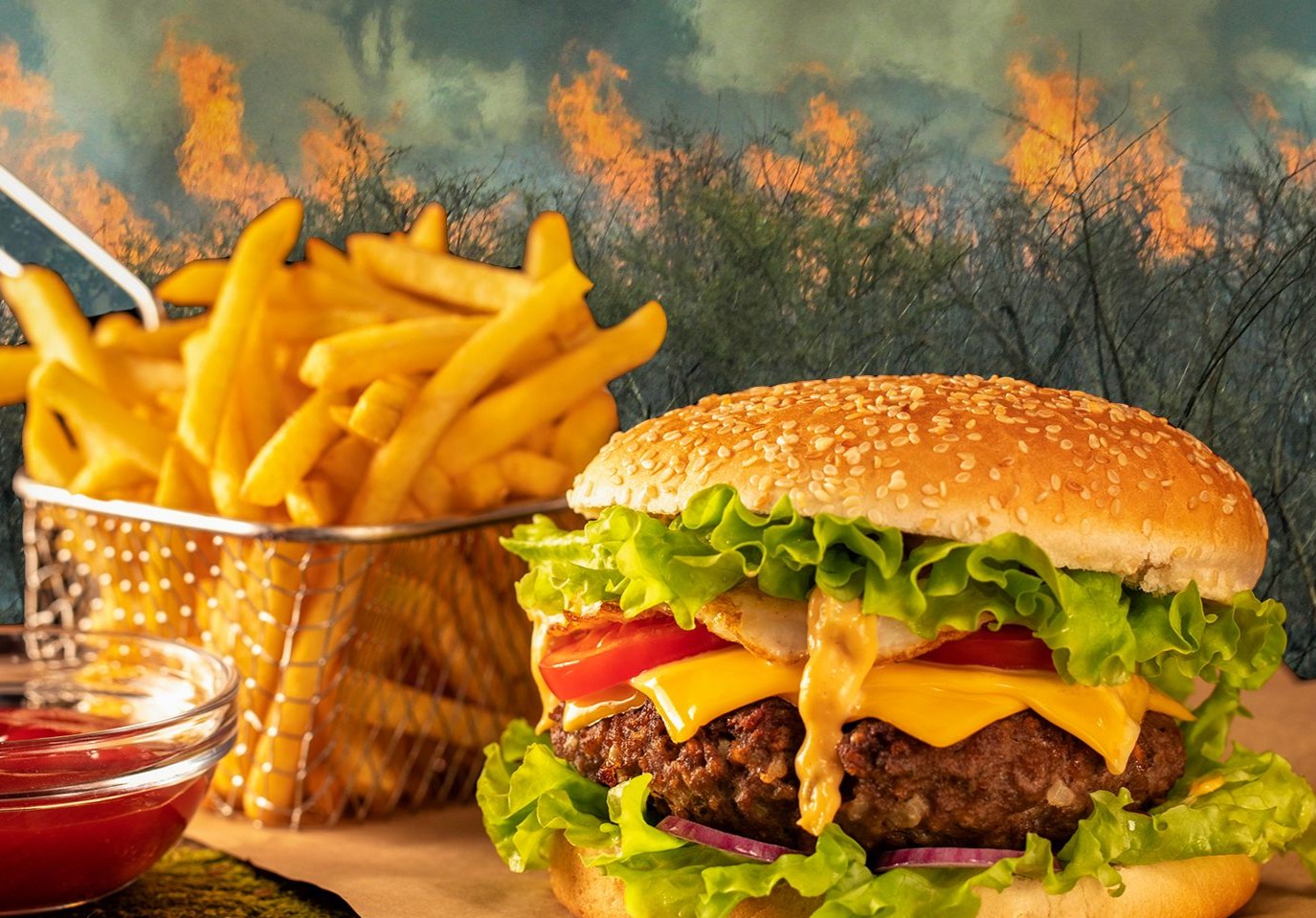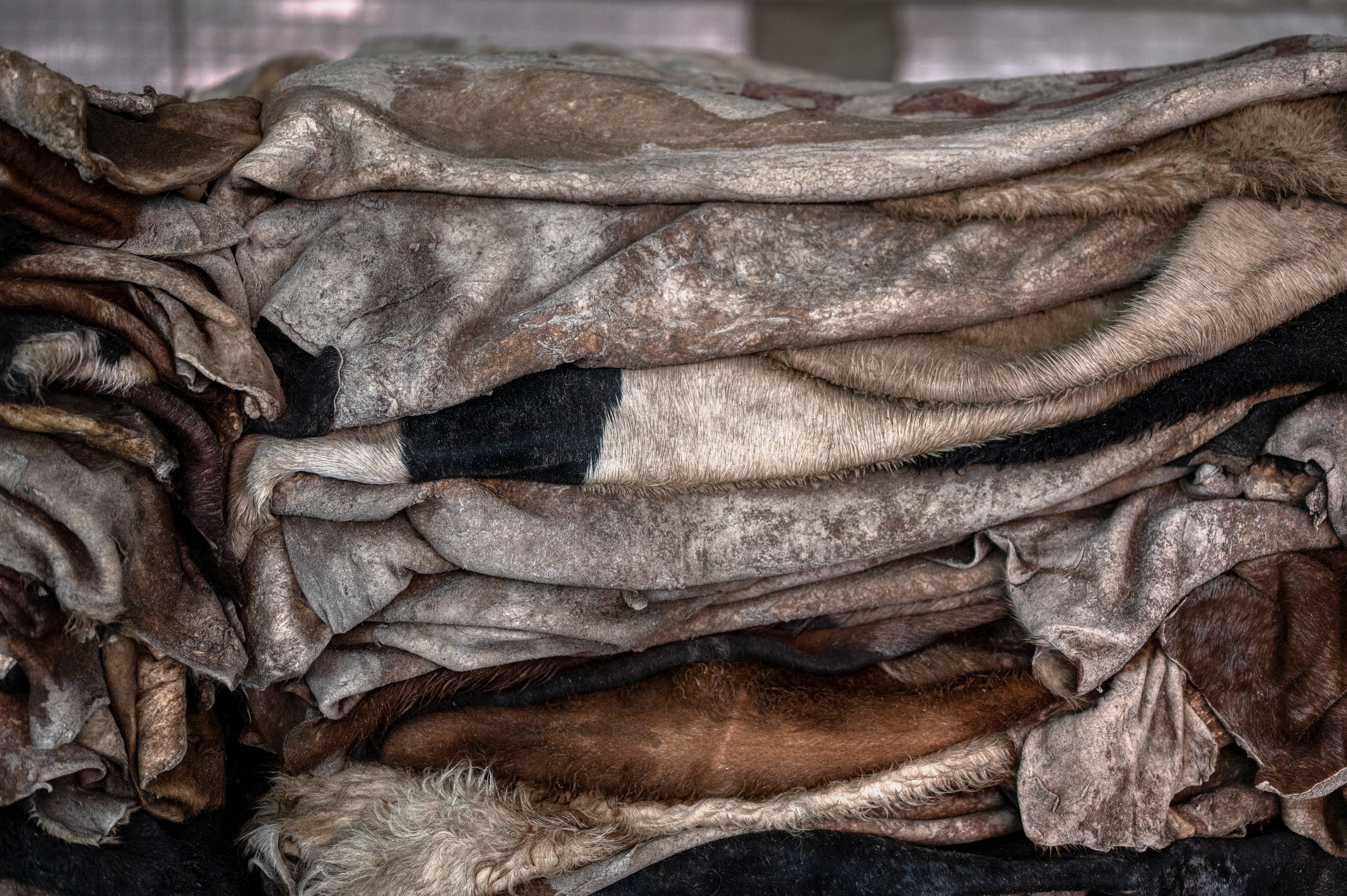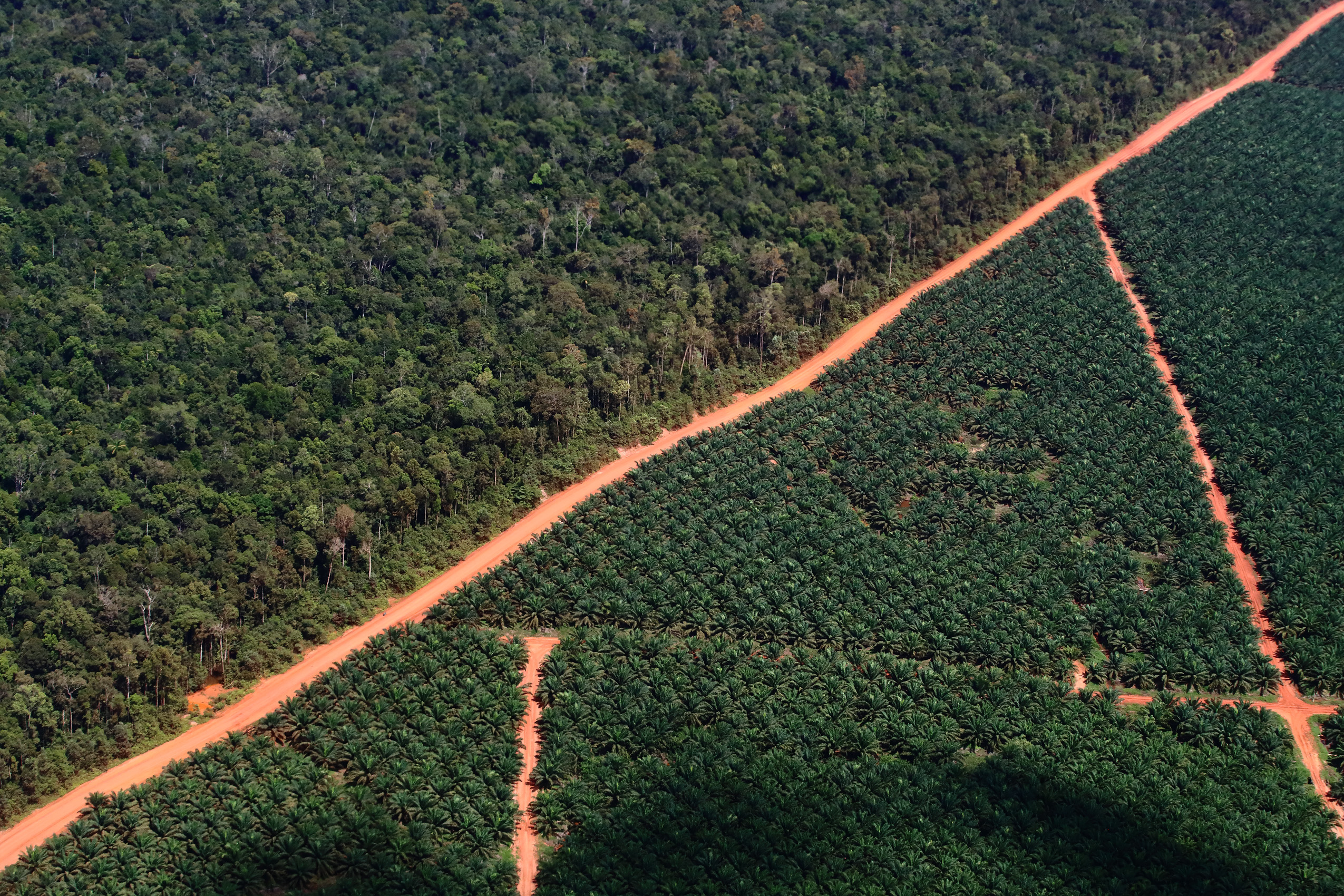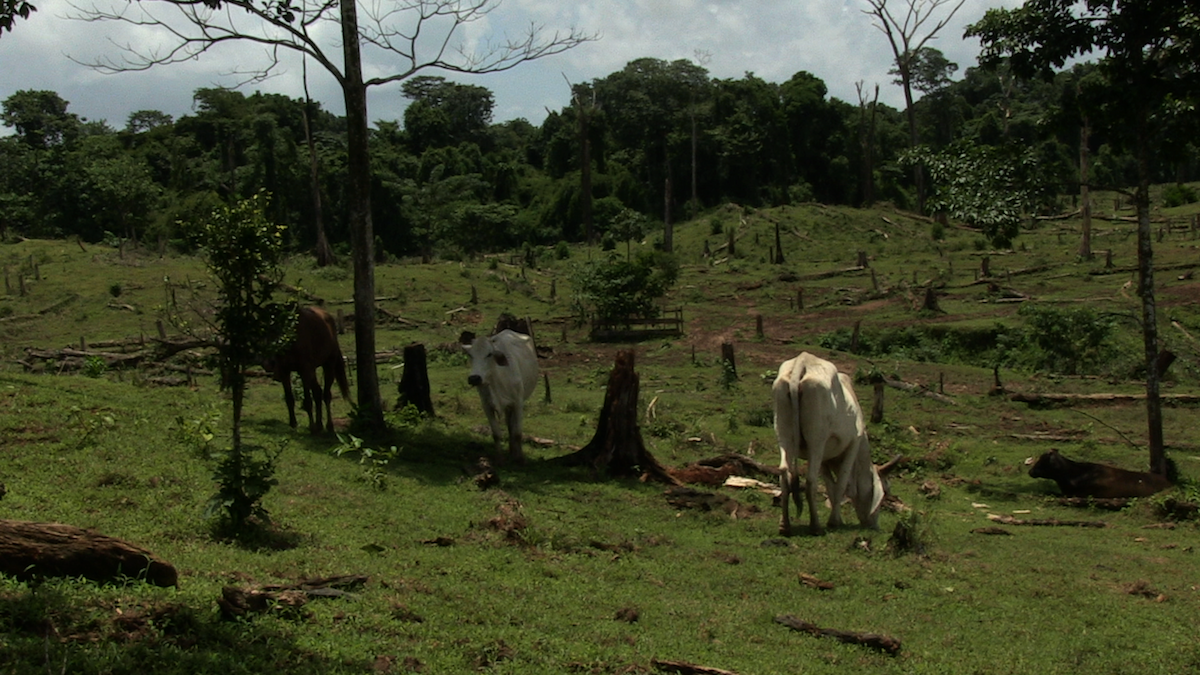
Recently deforested areas in Bosawás Biosphere Reserve
Booming beef exports are fuelling illegal land sales, forest
clearances, and violent conflict in Nicaragua’s Bosawás Biosphere Reserve -
home to one of Central America’s last remaining pockets of Intact forest landscape.
UNESCO describes Bosawás as “the heart of the Mesoamerican
Biological Corridor,” a continuous network of ecosystems stretching from Mexico
to Costa Rica which is critical for the region’s biodiversity. Bosawás alone
contains 7% of global biodiversity, as well as 57% of all
Central American species. But between 1987 and 2010, more than 564,000 hectares (ha) of the reserve were cleared and replaced with cattle ranches and cropland.
More recently, since 2011, Bosawás has lost a further 92,157ha of forest cover, according to analysis by Nicaraguan NGO the Humboldt
Centre. Most of this deforestation (83%) occurred in the reservation’s
buffer zone, which surrounds its core protected area and allows for sustainable
human activity. However, illegal property sales and unsustainable farming
practices make much of this deforestation illegal.
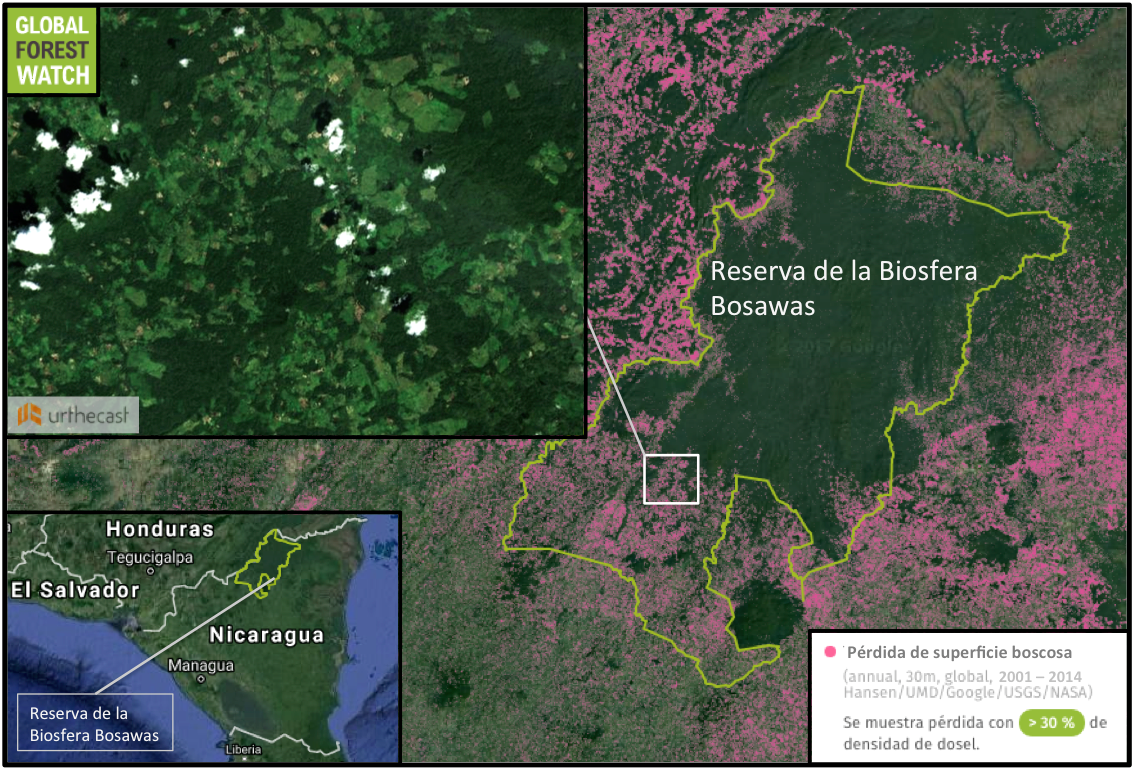
According to data from the University of Maryland and visualized via Global Forest Watch, the Bosawás Biosphere Reserve lost about 6.5 % of its tree cover between 2001 and 2014, mostly concentrated in the south
Land in Bosawás cannot be legally bought and sold, as it
lies within the North Atlantic Autonomous Region, which was ceded to indigenous
communities at the end of the 1980s. But illegal land transactions are
commonplace, propelled by settlers from the west of Nicaragua moving into the
region in search of cheaper land.
These settlers are typically small-scale farmers and herders
who have been pushed out of the west of Nicaragua by the arrival of
international agribusiness. Though they are small-scale, their illegal land
clearances are both directly and indirectly connected to big business and
exports. In the last six years, Nicaragua has expanded its exports of
agricultural products in response to increasing global food demand. The latest
agricultural census records that the quantity of livestock in the country increased
from 2.6 million in 2001 to 4.1 million in 2014. Data from Nicaragua’s Exports
Centre (CETREX) shows that beef exports increased from 84,721 tons in 2010 to
95,066 tons in 2016, and that beef is now the country’s second most lucrative
export after coffee.
Priced out of the west of Nicaragua, smaller landholders
move east into the Bosawás reserve, frequently acquiring land via illegal
channels. A 2014
investigation by Nicaraguan newspaper Confidencial found that the land
titles being bought and sold were often written by hand on a single sheet of
paper. Alternatively, corrupt lawyers and notaries were willing to prepare more
credible documents for a fee.
Having acquired land, settlers then cut and burn the virgin
forest to cultivate crops or grass for cattle. Several local producers told
Mongabay that they raise livestock on their properties for large-scale cattle
ranchers. Later, once soil fertility depletes, these predominantly arable farmers
move on to new areas within the reserve, leaving behind degraded space that is
taken up directly by large-scale ranchers. Low productivity rates – pastures in
Nicaragua have an average of one head of cattle per hectare – lead these
ranchers to seek the expansion of pasture land to keep production growing.
‘Land traffickers’ also operate in the reserve, buying land
on the black market, selling any valuable timber, clearing the remaining native
vegetation, and cultivating the land with pasture to sell on to cattle ranchers
at a profit. Earlier this year, sociologist Manuel Ortega told Mongabay that
lawyers, local government officials, political parties and indigenous
organisations are all involved in these illegal transactions.
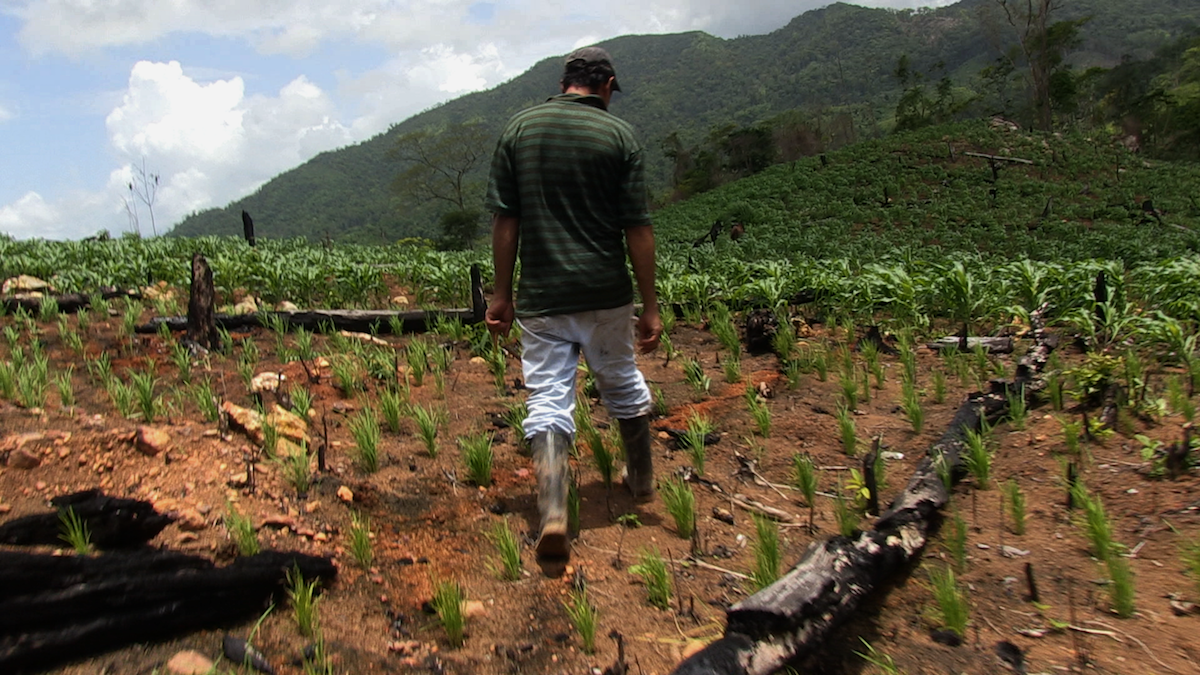
Land trafficker in the protected area of Cerro Banacruz, in the Bosawás buffer zone
Indigenous Communities
As well as driving deforestation, illegal land sales and
progressive incursions into the Bosawás reserve have displaced indigenous
Mayagma and Mesquito communities, triggering armed conflicts between
indigenous people and settlers.
Mayagma and Mesquito people have fought to defend their
territory from land grabs by settlers for more than a decade, denouncing
seizures to local authorities. But prosecutions have been few. In their 2014
investigation, Confidencial interviewed
an activist working with the help of an international organisation to evict
illegal settlers from Bosawás. He said that of 148 documented cases of illegal
settlement, only four were tried in court; two were found not guilty, and of
the two guilty cases, one of the parties escaped from jail.
On the other hand, resistance has proved deadly for members
of the indigenous communities. In the last five years, 30 Miskitu men have been
killed and 38 wounded in clashes with settlers, according to this year’s census
by the Atlantic Coast of Nicaragua’s Centre for Justice and Human Rights.
Since 2014, some indigenous communities have abandoned their
legally recognized territory altogether. 500 Meskitu refugees from Bosawás are
currently living in neighbouring Honduras. Of a population of 10,800 people who
lived in the indigenous territories of WangkiTwi-Tasba Raya, Li Aubra and
Lilamni Tasbaika Kum, at least 3,000 have been forced to flee their land and
resettle elsewhere in Nicaragua, according to reports in national
newspaper La
Prensa.
In 2016 the Inter-American Commission on Human Rights stated
that settlers had prevented indigenous people from returning to their farms and
stopped them harvesting agricultural products, “exacerbating the food crisis”.
It reported that many of those displaced into other communities were struggling
with malnutrition.
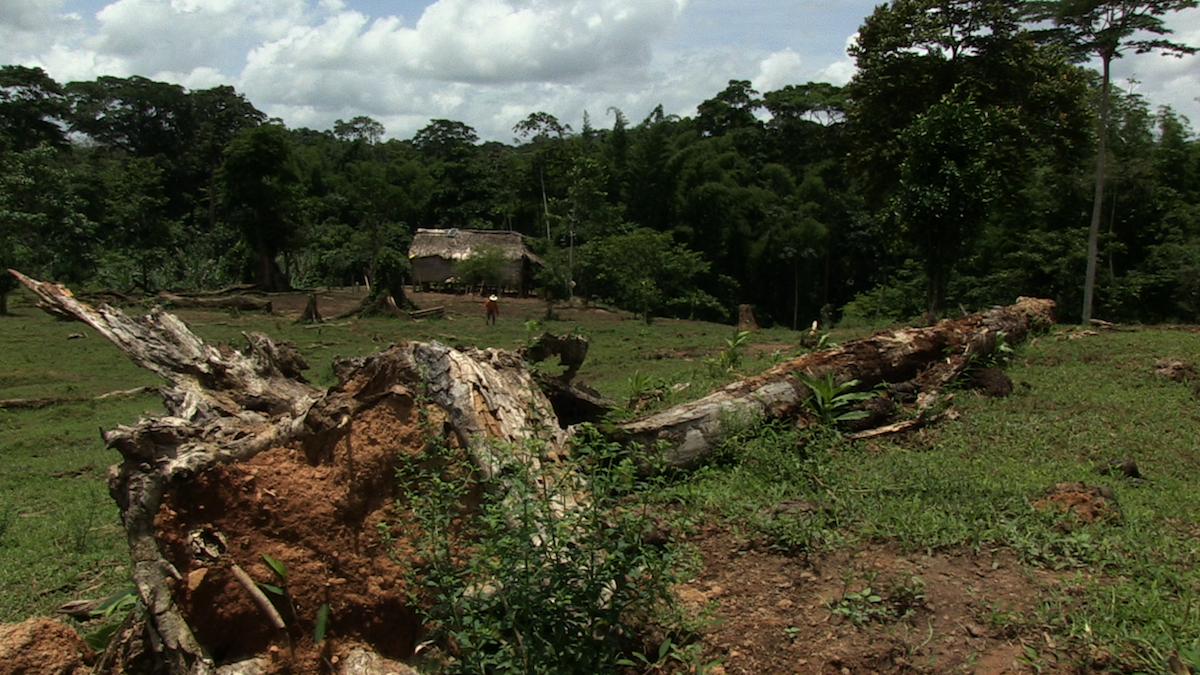
Recently deforested areas in Bosawás Biosphere Reserve
Mongabay has also reported on
the loss of 54,000 hectares of forest over the last six years in the core area
of a second crucial biodiversity hotspot in Nicaragua, the Southeast Biosphere
Reserve.
As in Bosawás, this deforestation is largely driven by
livestock. The municipality of Nueva Guinea, within the reservation’s buffer
zone, now has over 1.1 million heads of cattle. According to Mongabay, Nueva Guinea
is the Nicaraguan municipality with the highest level of livestock activity,
despite being inside the reserve. Since 2011, 54,000 hectares of forest have
been lost, representing 19.4% of the reserve’s core area.
Indigenous people living in the southeastern reserve have
also endured displacement and violence. Researcher Amaru Ruiz told Mongabay
that land purchases have led to forced migration, “which in turn increases the
invasion-deforestation process inside the reserve”.
